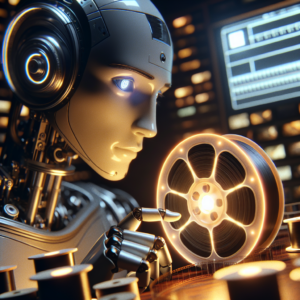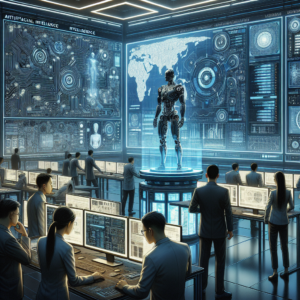Silicon Valley Stifled the AI Doom Movement in 2024
The discourse surrounding artificial intelligence has intensified significantly over the last few years, especially as we have entered 2024. The AI doom movement, which raises concerns about the potentially catastrophic impacts of unchecked AI development, gained traction. However, it has faced strong opposition, particularly from the tech giants in Silicon Valley. This post explores how Silicon Valley stifled the AI doom movement in 2024 and what implications this has for the future of AI development.
The Rise of the AI Doom Movement
As artificial intelligence technology continues to advance at breakneck speeds, so too do the concerns surrounding it. The AI doom movement consists of individuals and organizations that warn against the risks and consequences associated with the rapid development of AI technologies. These risks include:
- Job displacement: Automation and AI are projected to replace millions of jobs, leading to significant unemployment.
- Ethical concerns: AI systems can perpetuate bias and discrimination, raising concerns about fairness and justice.
- Autonomous weapons: AI technology can be misused to create lethal autonomous systems, posing a threat to global security.
- Lack of accountability: As AI systems operate with increasing autonomy, determining responsibility for their actions becomes problematic.
These concerns have sparked a movement aimed at promoting more responsible AI development. However, the movement has faced significant pushback from those who believe that the potential benefits of AI far outweigh the risks.
Silicon Valley’s Response
In the face of mounting pressure from the AI doom movement, Silicon Valley, home to many of the world’s largest tech companies, has been quick to counter these concerns. The response can be distilled into several key strategies:
1. Public Relations Campaigns
Tech companies in Silicon Valley have engaged in extensive public relations campaigns to shape the narrative surrounding AI. These campaigns emphasize the positive aspects of AI, such as:
- Enhancements in productivity: AI technologies can streamline processes and improve efficiency across various industries.
- Advancements in healthcare: AI can assist in diagnosing diseases and personalizing treatment plans, leading to better patient outcomes.
- Innovations in education: AI-driven tools can facilitate personalized learning experiences, enhancing educational opportunities for students.
By focusing on these benefits, Silicon Valley seeks to downplay the fears associated with AI development and redirect public attention towards its positive potential.
2. Lobbying Efforts
In addition to public relations campaigns, Silicon Valley companies have also invested heavily in lobbying efforts. This involves:
- Influencing policymakers: Tech giants work to shape legislation and regulations that govern AI, advocating for less restrictive measures.
- Funding research initiatives: Many companies fund research that aims to demonstrate the safety and efficacy of AI technologies, positioning themselves as responsible developers.
- Collaborating with governments: By partnering with government agencies, tech companies seek to establish frameworks that favor continued AI development.
Through these lobbying efforts, Silicon Valley aims to minimize constraints on AI development, ultimately prioritizing innovation and market growth over potential risks.
The Impact on the AI Doom Movement
As a result of Silicon Valley’s strategies, the AI doom movement has faced significant challenges, which can be categorized into several areas:
1. Diminished Public Awareness
The focus on positive narratives surrounding AI has contributed to diminished public awareness of its potential dangers. Many individuals may not fully grasp the risks involved, as the media coverage often highlights the benefits instead.
2. Fragmentation of the Movement
With Silicon Valley’s influence, the AI doom movement has seen fragmentation. Various factions within the movement have emerged, each with differing priorities and strategies. This fragmentation limits the movement’s effectiveness and ability to present a unified message.
3. Shifts in Funding
The increased lobbying efforts and funding from tech companies have created an environment where organizations promoting the AI doom narrative may struggle to secure funding. As a result, many grassroots initiatives may falter due to a lack of resources.
Looking Ahead: The Future of AI and the Doom Movement
As we progress through 2024 and beyond, the tension between the AI doom movement and Silicon Valley is likely to continue. There are several key factors to consider for the future:
- Regulatory Developments: Governments around the world must grapple with the challenges and opportunities presented by AI. Striking a balance between innovation and safety will be paramount.
- Technological Advancements: As AI continues to evolve, new risks and ethical dilemmas will arise, necessitating ongoing dialogue between developers, regulators, and the public.
- Public Engagement: Increasing awareness and understanding of AI’s risks will be crucial in shaping public opinion and future policies.
In conclusion, while Silicon Valley has made substantial efforts to stifle the AI doom movement in 2024, the conversation surrounding AI development and its potential risks is far from over. As society navigates the complexities of AI, it is essential for all stakeholders to engage in constructive dialogue to ensure that the technology benefits humanity while mitigating its risks.


